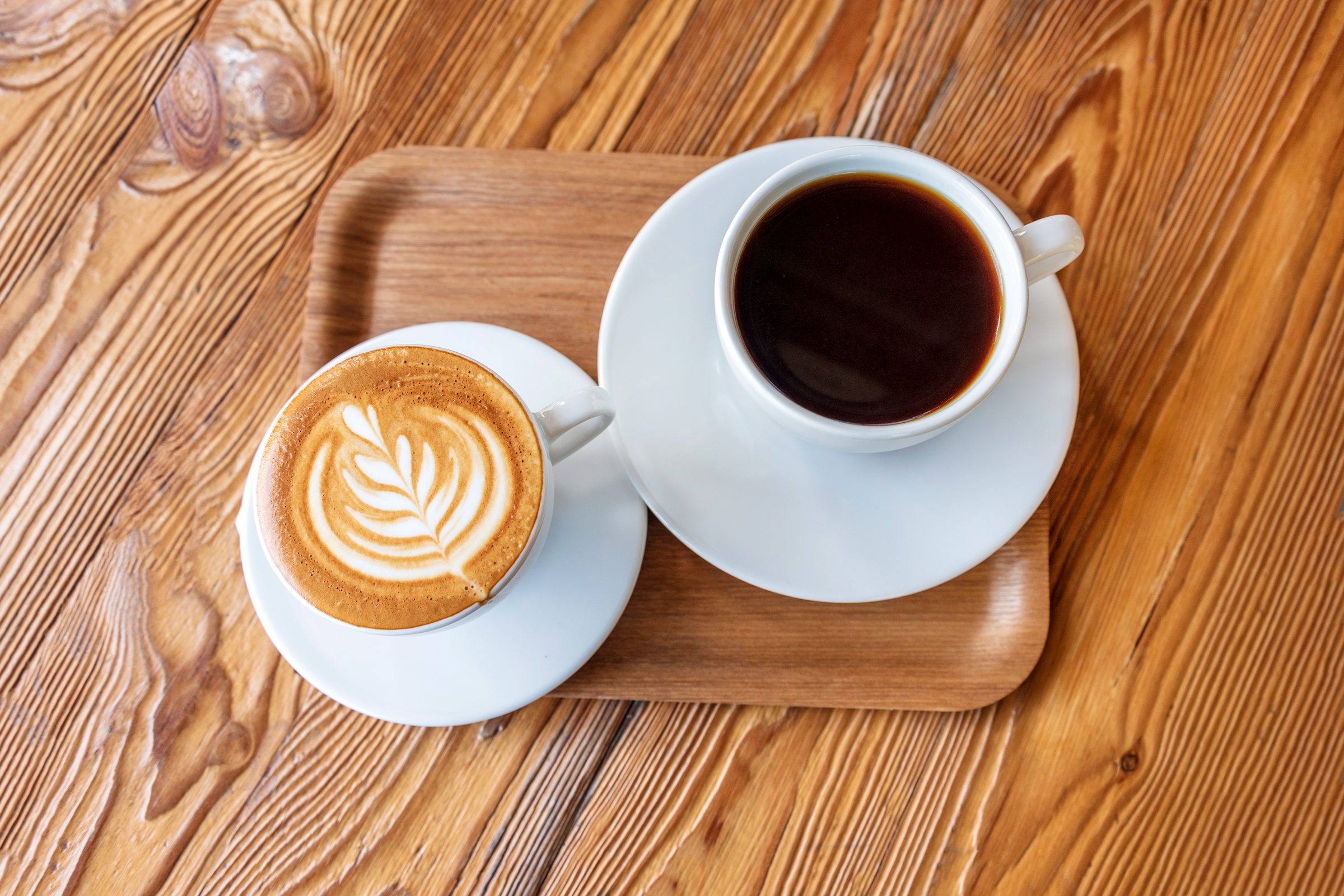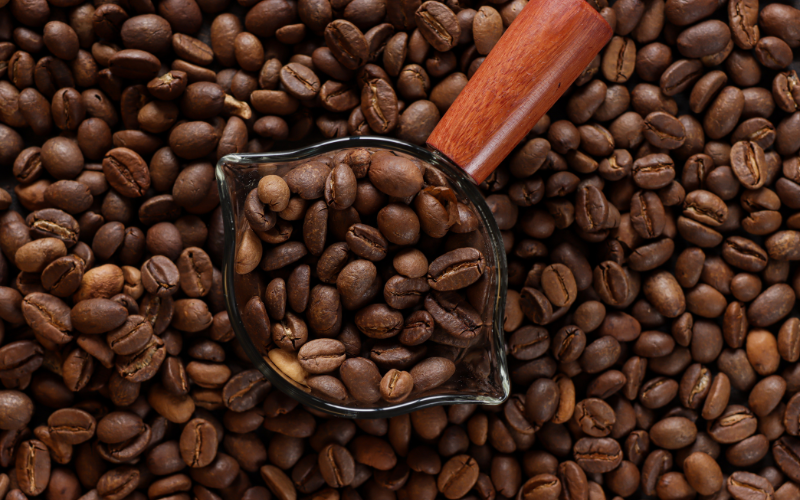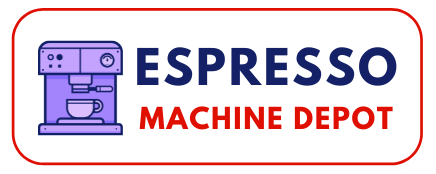The Difference Between Espresso and Coffee: What You Need to Know

Coffee is one of the most popular beverages around the world, enjoyed by millions every day. But if you’ve ever found yourself at a café wondering what the difference between espresso and coffee is, you’re not alone! Both drinks come from the same coffee beans, yet they are quite different in how they are made, how they taste, and how they’re served.
If you’re a fan of coffee, you’ve probably heard the terms “espresso” and “coffee” used interchangeably. However, they are not the same thing! While both are beloved beverages made from coffee beans, they have distinct differences in pleasure and preparation.
Espresso is often seen as the fancy cousin of regular coffee. It’s strong, rich, and served in small shots, while regular coffee is typically brewed in larger quantities and has a milder flavor. Understanding these differences can help you choose the right drink for your mood or occasion, whether you’re looking for a quick pick-me-up in the morning or a leisurely cup to enjoy with friends.
What is Espresso?
Espresso is a strong, concentrated coffee made by forcing hot water through finely ground coffee under high pressure. This brewing method creates a rich, bold flavor and a creamy layer on top called “crema.” Espresso is typically served in small shots, making it a quick and intense way to enjoy coffee.

Key Characteristics of Espresso
- Brew Method:
Espresso is made using an espresso machine, which applies pressure (typically around 9 bars) to extract flavors from coffee grounds. This brewing method results in a rich and intense flavor profile. - Flavor Profile:
Espresso is known for its bold, robust taste with a complex flavor profile. It often has notes of chocolate, caramel, or fruit, depending on the bean origin and roast level. - Crema:
One of the defining features of a well-pulled espresso shot is the layer of crema that forms on top. This golden, frothy layer is a result of emulsified oils and is a sign of quality extraction. - Serving Size:
Espresso is typically served in small quantities, usually in 1-ounce (30 ml) shots. It’s a concentrated form of coffee, making it stronger than regular brewed coffee. - Varieties:
There are several variations of espresso-based drinks, including:
– Ristretto: A shorter, more concentrated shot.
– Lungo: A longer shot made with more water.
– Americano: Espresso diluted with hot water.
The Espresso Experience
For many coffee lovers, espresso is more than just a drink; it’s a ritual. The process of grinding the beans, tamping the coffee, and pulling the shot can be a meditative experience. Additionally, the versatility of espresso allows for endless creativity in crafting various coffee drinks.
What is Regular Coffee?
On the other hand, regular coffee often referred to as brewed coffee or drip coffee, is made by steeping coarsely ground coffee beans in hot water for a longer period. This slower process allows for a fuller extraction of flavors, resulting in a milder taste compared to espresso. Regular coffee is usually served in larger cups, making it a popular choice for those who enjoy sipping their coffee over a longer period.

Key Characteristics of Regular Coffee
- Brewing Method:
Regular coffee is typically brewed using methods such as drip brewing, pour-over, French press, or percolation. In these methods, hot water flows through coffee grounds, extracting flavors over several minutes. - Flavor Profile:
The flavor of regular coffee can vary widely based on the coffee bean origin, roast level, and brewing method. It tends to be less concentrated than espresso, offering a smoother and more balanced taste. - Serving Size:
Regular coffee is usually served in larger quantities, typically ranging from 8 to 12 ounces (240 to 355 ml) or more. This allows for a more leisurely coffee-drinking experience. - Caffeine Content:
While espresso is more concentrated, a standard serving of regular coffee generally contains more caffeine overall due to its larger volume. An 8-ounce cup of brewed coffee typically contains about 80-100 mg of caffeine, depending on the brew strength and type of coffee used. - Varieties:
Regular coffee can be enjoyed in various styles, including:
– Black Coffee: Served without any additives.
– Coffee with Milk or Cream: Often enhanced with milk, cream, or non-dairy alternatives.
– Flavored Coffee: Infused with syrups or spices for added flavor.
The Regular Coffee Experience
For many, drinking regular coffee is a daily ritual, often enjoyed during breakfast or as a mid-day pick-me-up. The aroma of freshly brewed coffee can be comforting and inviting, making it a staple in homes and cafes alike.
Why It Matters
Understanding the differences between espresso and coffee can enhance your appreciation for both drinks. Each has its own unique flavor profile and brewing method, which can significantly impact your coffee experience. Whether you prefer the bold kick of espresso or the smooth, mellow taste of regular coffee, knowing how they differ can help you choose the right drink for any occasion.
The Difference Between Espresso and Regular Coffee
While espresso and regular coffee are both beloved coffee beverages, they differ significantly in terms of preparation, flavor, and serving size. Here’s a breakdown of the key differences:
- Brewing Method
– Espresso:
Espresso is brewed by forcing hot water through finely-ground coffee at high pressure (typically 9 bars). This process extracts flavors quickly, resulting in a concentrated shot.
– Regular Coffee:
Regular coffee is brewed using methods like drip brewing, pour-over, or French press. Hot water passes through coarsely-ground coffee for several minutes, allowing for a gentler extraction. - Flavor Profile
– Espresso:
Espresso has a bold, rich flavor with a complex profile. It often features intense notes of chocolate, caramel, or fruit, and is characterized by its creamy texture and thick crema on top.
– Regular Coffee:
Regular coffee tends to have a milder, smoother flavor. The taste can vary widely based on the bean type and brewing method but is generally less intense than espresso. - Serving Size
– Espresso:
Espresso is typically served in small quantities, usually in 1-ounce (30 ml) shots. A single shot of espresso packs a lot of flavor and caffeine in a small volume.
– Regular Coffee:
Regular coffee is usually served in larger sizes, typically ranging from 8 to 12 ounces (240 to 355 ml) or more, allowing for a leisurely drinking experience. - Caffeine Content
– Espresso:
While espresso is more concentrated, it contains less caffeine per serving due to its smaller size. A single shot of espresso usually has about 63 mg of caffeine.
– Regular Coffee:
In a standard 8-ounce cup of brewed coffee, there can be about 80-100 mg of caffeine, making it higher in total caffeine content due to the larger serving size. - Preparation Time
– Espresso:
The brewing process for espresso is quick, taking around 25-30 seconds to pull a shot once the machine is heated and ready.
– Regular Coffee:
Brewing regular coffee typically takes longer, often several minutes, depending on the method used. - Equipment
– Espresso:
Making espresso requires an espresso machine, which can be more complex and expensive than other brewing equipment.
– Regular Coffee:
Regular coffee can be brewed using a variety of equipment, such as drip coffee makers, French presses, or pour-over devices, which can be more accessible and affordable.

How to Enjoy Both
- Espresso Drinks
Espresso serves as the base for many popular coffee drinks, such as lattes, cappuccinos, and Americanos. Exploring these variations can enhance your coffee experience. - Regular Coffee Variations
Regular coffee can also be enjoyed in many forms, including cold brew, iced coffee, or flavored brews. Experimenting with different beans and brewing methods can lead to exciting new flavors. - Pairing with Food
Both espresso and regular coffee pair well with various foods. Espresso can complement desserts, while regular coffee works wonderfully with breakfast items or pastries.
Brewing Equipment Needed for Espresso and Coffee
When it comes to making espresso and regular coffee, the equipment you use plays a crucial role in the quality of your brew. Here’s a breakdown of the essential brewing equipment for each method.
Equipment for Brewing Espresso

- Espresso Machine: The main piece of equipment for making espresso. It uses pressure (usually around 9 bars) to force hot water through finely-ground coffee.
Types:
– Manual Espresso Machines: Require more skill and control; you operate the pressure manually.
– Semi-Automatic Machines: Offer some automation while allowing you to control the grind and extraction time.
– Automatic Machines: Handle most of the brewing process for you, making it easier for beginners.
– Super-Automatic Machines: Grind, tamp, brew, and even steam milk at the push of a button. - Coffee Grinder: A crucial tool for achieving the right grind size for espresso, which should be very fine.
Types:
– Burr Grinder: Provides a consistent grind size, essential for espresso. A good quality burr grinder is highly recommended.
– Blade Grinder: Less ideal due to inconsistent grind sizes, but can be used in a pinch. - Tamper: A tool used to press down the coffee grounds in the portafilter before brewing. A good tamp is crucial for even extraction.
– Features: Look for one that fits your portafilter snugly and has a comfortable grip. - Portafilter: A handle with a basket that holds the coffee grounds. It locks into the espresso machine for brewing.
– Types: Can come with single or double shot baskets, depending on how much espresso you want to make. - Milk Frother (Optional): Used for steaming and frothing milk to create lattes, cappuccinos, or other espresso-based drinks. Some machines come with built-in steam wands. learn more about milk frothing
Equipment for Brewing Regular Coffee

- Drip Coffee Maker: The most common method for brewing regular coffee. It automatically heats water and drips it over coffee grounds.
– Features: Look for models with programmable settings, built-in grinders, or thermal carafes to keep coffee hot. - Pour-Over Brewer: A manual brewing method where you pour hot water over coffee grounds in a filter. Popular options include the Hario V60 and Chemex.
Equipment Needed:
– Pour-Over Cone: Holds the coffee filter and grounds.
– Coffee Filters: Specific to the type of pour-over device you’re using. - French Press: A simple method that involves steeping coarsely ground coffee in hot water and then pressing it through a mesh filter.
Components:
– Carafe: Usually made of glass or stainless steel.
– Plunger and Mesh Filter: Used to separate the grounds from the brewed coffee. - AeroPress: A versatile and portable device that brews coffee by forcing hot water through coffee grounds using air pressure.
Components:
– AeroPress Chamber: Holds the coffee and water.
– Plunger: Used to push the coffee through the filter.
– Filters: Paper or metal filters to separate the grounds. - Coffee Grinder: Essential for grinding coffee beans to the appropriate size. A medium grind is usually best for brewed coffee.
Types:
– Burr Grinder: Preferred for consistency.
– Blade Grinder: More affordable but less consistent. learn more about coffee grind size
In summary, understanding the difference between espresso and coffee can greatly enhance your coffee experience. While both drinks are made from coffee beans, they offer unique flavors and preparation methods that cater to different preferences.
Espresso is strong and intense, perfect for those who enjoy a quick, bold shot of coffee. Its rich flavor and creamy texture make it a favorite for many coffee enthusiasts. On the other hand, regular coffee is milder and typically served in larger cups, making it ideal for leisurely sipping throughout the day.
Whether you prefer the concentrated taste of espresso or the smoothness of brewed coffee, both options have their own charm. Knowing how they differ can help you choose the right drink for your mood or occasion. So, the next time you find yourself at a café or brewing at home, you can confidently pick the coffee that suits you best.
Ultimately, coffee is about enjoyment and personal preference. So, explore both espresso and regular coffee, and discover which one you love more. Happy brewing!
